
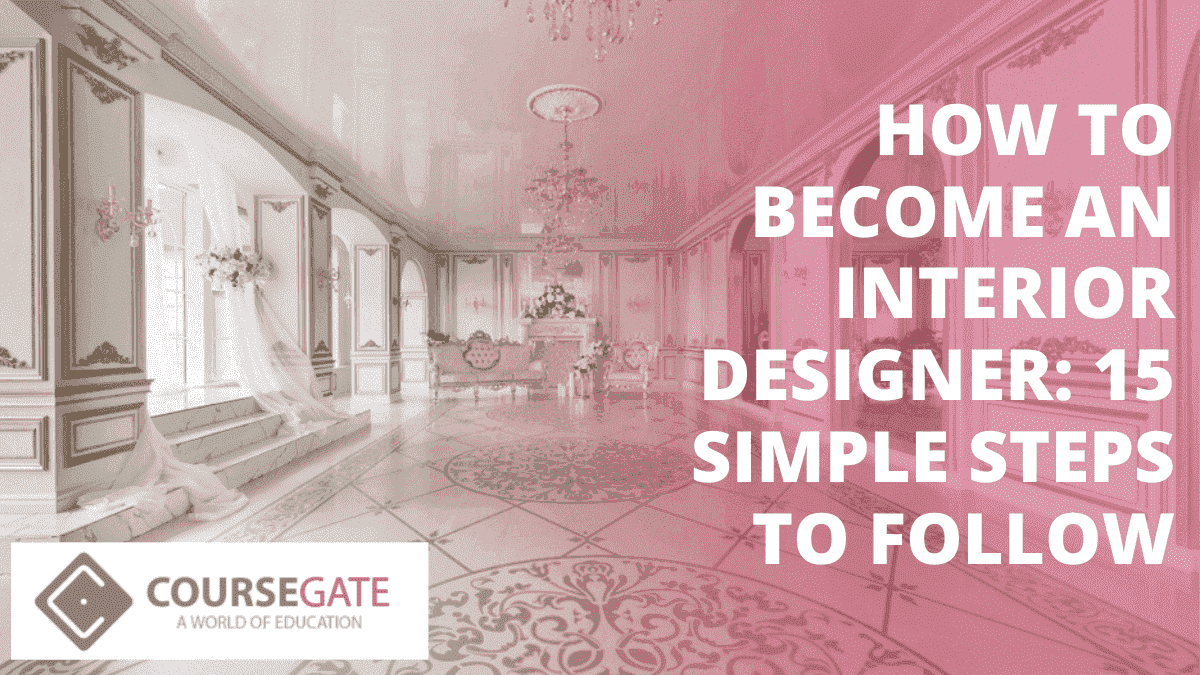
Some people have a natural aptitude for architecture. A career in interior design might be right for you if you enjoy decorating rooms and arranging furniture. However, before you begin daydreaming about space makeovers, think about how to become an interior designer.
Every day, interior designers, like any other professionals, face challenges. Although some may not be your cup of tea, others may inspire and motivate you. Let’s look at how to become an interior designer and other items to consider before enrolling in classes.
What is an Interior Designer?
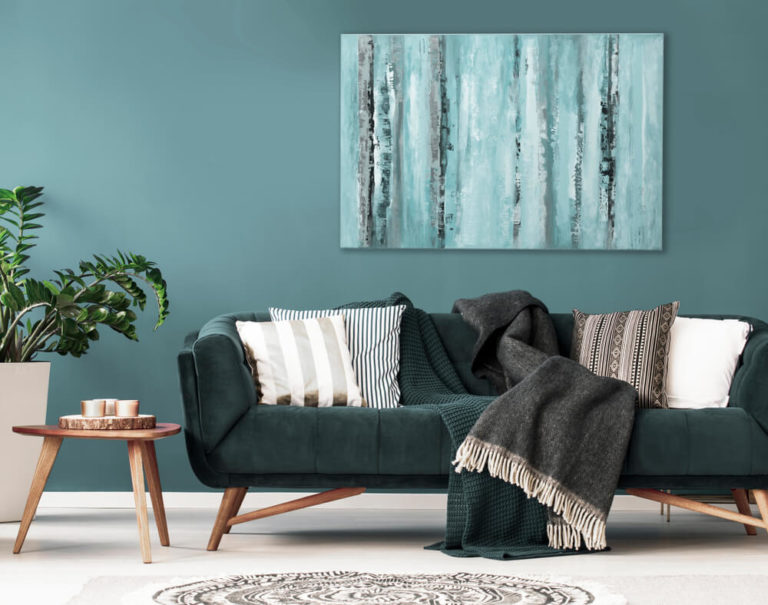
Interior designers focus on architecture and interior space planning for several clients. They create coherent and aesthetically pleasing projects for homes and businesses. Many interior designers specialize in specific design areas, such as:
- Home design (even down to specific rooms)
- Corporate office spaces
- Industrial interiors,
- Environmental design
- Accessibility requirements etc.
Interior designers handle everything from paint schemes to floor plans to building codes.
How to become an Interior Designer?
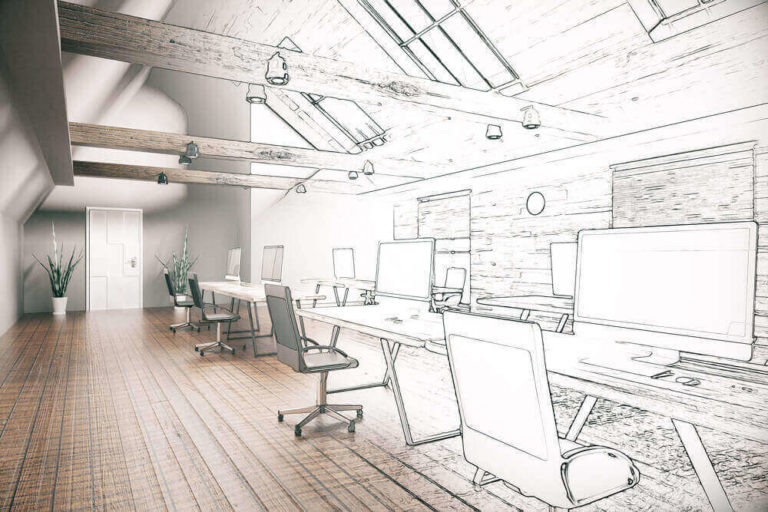
Interior designers have a natural eye and flair for creativity. The art of improving interiors is known as interior design. Interior designers improve the appearance, functionality, and safety of space. In essence, a career as an interior designer will provide you with more job security and higher pay opportunities than most other creative careers.
If you are considering a significant shift in your career but do not know where to begin, we got you covered! This article presents you with 15 simple steps to follow on how to become an interior designer. Build your career from scratch with us!
Take an Interior Design Class

Having a creative flair won’t get you far if the technical element of interior designing is unknown to you. You need to be knowledgeable in the essential tools of the trade. For instance:
- Space planning
- Colour theory
- Project management
- Spatial design
- And furniture design
In addition, you need professional knowledge of using computer software programs for designing projects.
To master all the techniques, you must get an educational and technical certification course. You can enrol into a level 5 course or get an advanced diploma if you know how to take up a challenge!
Researching and analysing emerging trends and incorporating this information into the conceptual design process is part of designing an interior space. Designers need to build spaces that reflect technological precision, imagination, versatility, and environmental sustainability. For all these, you need an accredited qualification to get you started.
Nurture Your Creativity & Attention to Detail
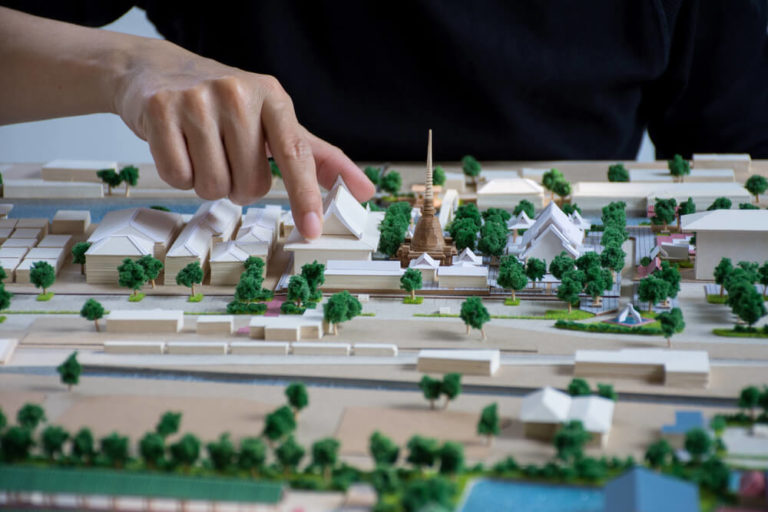
Interior designing is not just about beautifying spaces. You will need to be highly imaginative. Furthermore, you will be responsible for designing interiors for a variety of clients. Although possessing a distinct perspective can be advantageous, you’ll still need to be highly adaptable.
To create seamless environments, you’ll need to pay attention to both the small details and the big picture simultaneously. Although creativity isn’t the only requirement for this role, it is a must. Consequently, you need to always think outside the box as each client may have different wants. Overall, developing your creative skills will help you put up your best for each project.
Build a game-changing portfolio

The key to getting clients and projects lies inside your portfolio file. Initially, You can create mood boards and schemes as a visual blueprint of your portfolio. Furthermore, your portfolio should reflect your personality for it to be authentic. So, work hard on it!
Try making 2D visualisations, floor plan sketches, and 3D models. Pretend you’re working on a real-life project. The best part about doing this type of exercise is that you don’t have to worry about meeting any client requirements or sticking to a budget. So, you can let your creativity run wild and come up with some unique designs.
However, make sure you refresh the portfolio from time to time to stay on top of trends.
Get Real-Life Interior Designing Experience
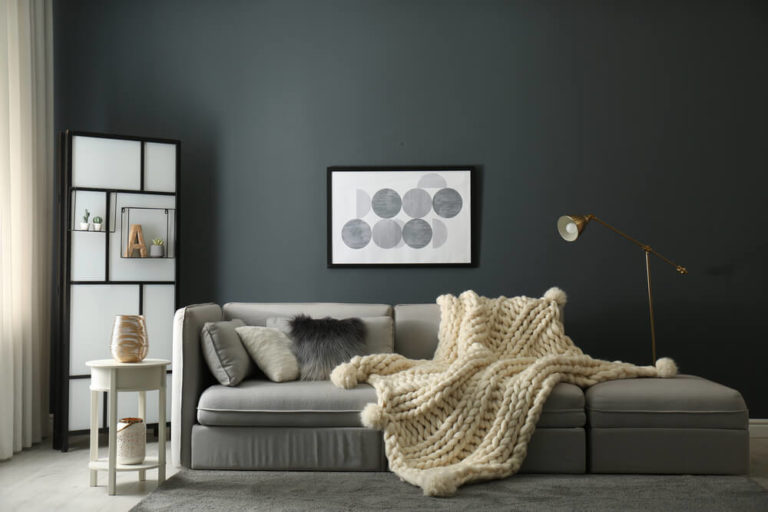
While your portfolio is in the making, it’s time for you to throw your hat into the ring! It will help if you revive your digital designs in life. You can redo your entire home or ask if any of your friends would like your service. Consequently, offer your service free of charge, in the beginning, to build up a rapport.
If you don’t want to work on your own, then you can intern in a design firm for a while. You’ll learn a lot by seeing how a real studio operates. And you’ll probably make some of your first mistakes in a comfortable environment, surrounded by people who will support you.
Also, you’ll discover how long it takes to plan, detail, and source a project in practice. In a design firm, you can ask questions and seek assistance from supervisors. Senior interior designers know this industry like the back of their palm. Rest assured, you will learn essential techniques from them and grow your network.
However, landing an internship is difficult nowadays, so you need a killer portfolio to help you stand out!
Build Connection With Other Professionals
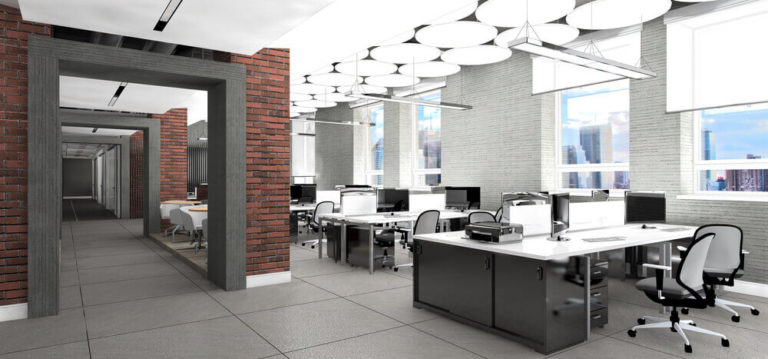
This is especially important if you are working solo! Growing your professional network will bring you new clients. Therefore, start growing your connections with those offering professional services in the interior industry. Suppliers are an excellent source for referral business. Painter, Realtors, Contractors and Plumbers are going to be your friends and great lead generators.
The more people you know, the higher the chances of success in this business. Attend professional events, speak at conferences to grow your network. Use social media to grow your followers. In addition, highlight your portfolio on social media to influence your potential clients. You can demonstrate your works easily, and in a visually compelling way by creating your own website. For inspiration, you can see some of the designer portfolio website examples, and build one on your own. . Be proactive and let people know that you are in this for the long haul.
Find Your Niche

Interior designers need to consider what they’re most passionate about. Immerse yourself in your field of interest and learn everything you can about it. Besides, people are drawn to designers who are enthusiastic about their chosen field and are willing to take chances with you. Keep in mind that you’re taking your clients on an adventure.
You can specialise in residential design, commercial design or preservation of historic spaces. Commercial designers have a wide range of paths to follow. For instance, corporate offices, restaurants, libraries, malls and retail shops.
Brush Up Your Digital Skills
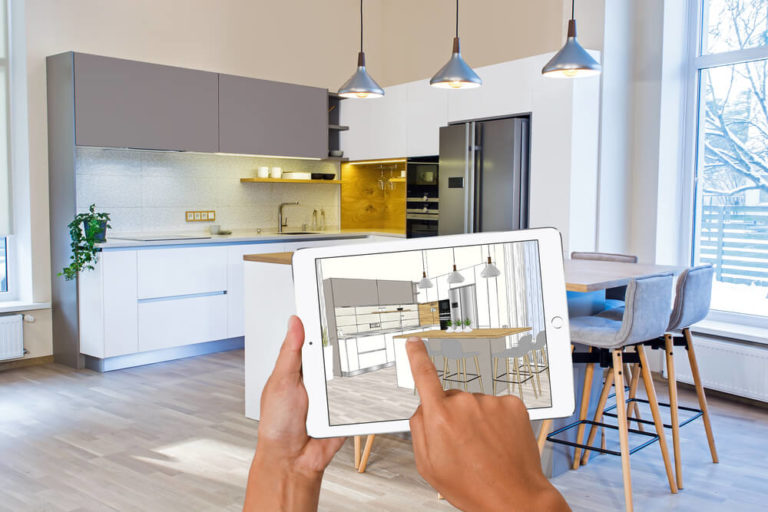
Being an interior designer is not just about dressing pretty and making presentations. It would be best if you are apt in digital interior designing tools. Some industry-standard programs are Revit, 3DS MAX, Auto CAD, Sketch Up Pro etc.
These tools will help you work faster. You will accurately articulate your ideas more clearly, and make them look more professional and appealing. Moreover, presenting your work in an industry-standard format would automatically increase your reputation. Consequently, you can communicate your ideas effectively and professionally with a prospective employer or customer.
Be a People Person
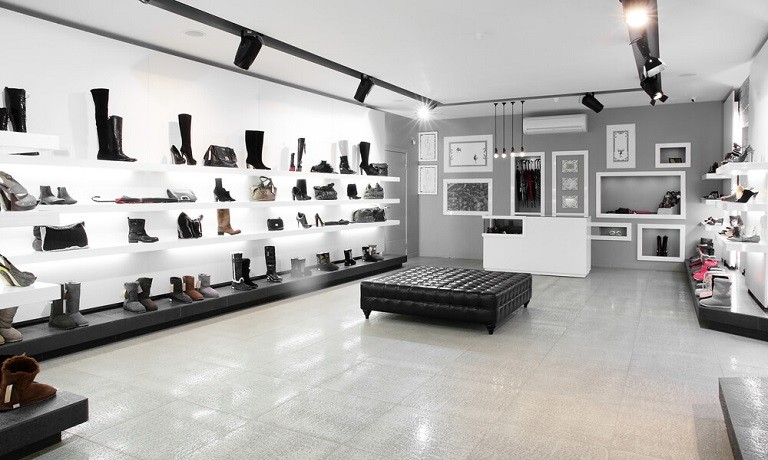
You have to realize that interior design is more about people than it is about fabrics and colours. After all, spaces are made to be used by people. That’s why a design plan’s effectiveness is mainly determined by how well it suits the client’s personality and lifestyle. This is true for both industrial and retail spaces that must adhere to corporate standards and brand values. Furthermore, learning how to handle people and their needs and developing an intuitive feel for what they want is indispensable to your job.
Sometimes, clients are indecisive. It becomes your duty to step up and pick the best for them based on their personality and taste. Hence, you need to effectively communicate and have excellent intuitive skills for your clients to put faith in you.
Have a Targeted Audience
This is an essential step in tackling the types of interior design projects you want. You need to figure out who your target audience is. It’s important to know who your ideal client is, what motivates them, and what their space-related priorities are.
Don’t make the mistake of thinking you want to build for everyone. Instead, concentrate on a specific audience and strive to be the best in that field. Determine what your clients want from an interior designer and strive to meet those expectations.
Market Your Business
Unfortunately, the majority of your perfect clients would not seek you out on their own. To ensure that your company is well-known in your neighbourhood, you’ll need to market it in many ways.
In the interior design industry, optimizing your website for frequently searched keywords is essential. In addition, you can engage with potential clients in your market to gain attention on social media. Also, you can attend local networking events, such as trade shows. You can even become a member of well-known interior design organizations if you want. Besides, your interior design firm’s marketing is a continuous operation. You’ll need to be strategic about how you market your brand in the long run.
Collaborate

In today’s world, collaboration is the standard, and interior design is no exception. Collaborating with a similar designer can help you strengthen your brand and establish yourself as a subject-matter expert.
Consider it as a method of establishing your brand by association. Alternatively, you might collaborate with a completely different designer to reach a more vast, previously untapped audience. Moreover, this brings a sense of originality and surprise.
Architects and interior designers have collaborated in the past, resulting in some of the most innovative practices.
Doing so will help you learn more, make new connections and opportunities. You will potentially find an ally, someone with whom you can bounce ideas for the rest of your career.
Set your rate
It can be challenging to figure out how much to charge clients when you first start your interior design company. Initially, you’ll earn less than your goal hourly rate. But as your experience grows, you’ll be able to increase your rates accordingly.
Spend some time looking into how much do interior designers in your area charge. These are your rivals, and you’ll want to match their rates. Moreover, take into account additional factors like experience and firm scale. Keep a comprehensive record of how long each stage of the design process takes from start to finish as you work on projects. Consequently, account for your overhead costs and add a little more as a buffer.
Do not sell yourself short or undermine your value in the market. Finally, set up a business account to make sure there’s no delay in the payment.
Keep On Learning
Trends come and go. Styles change, technology advances, and the search for a sustainable future remains enticing. You must stay on the cutting edge of art to ensure that you never sit idle. Accordingly, continuous learning and growth can help you stay on top of industry developments. Forever education ensures your knowledge and skills are up-to-date.
Furthermore, this improves your skills and allows you to advance to more senior positions. Because let’s face it, you don’t want to be stuck doing the same thing for years with little opportunity for advancement. Thus, you can dip your toe into a new specialism or take your education to the next level! If you started with a beginner interior design course, enrol yourself into a diploma or bachelor’s degree.
Have Management Skills
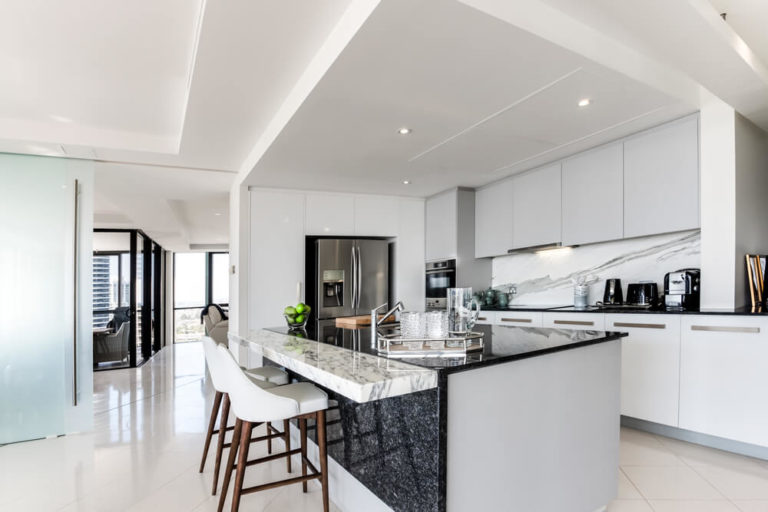
To complete designs on schedule and budget, an interior designer must be highly coordinated. You’re not going to get repeat business if work takes too long or costs exceed what a customer was told. Hence, designers must schedule it down to the minute and money. You must prepare ahead of time to account for unforeseen delays and costs.
Predict The Future
Predicting the future sounds absurd, right, but hear me out! Interior design and other creative fields have a lot of similarities when it comes to design evolution. What exactly do we mean by that?
Take a look at what’s going on in the worlds of music, art, fashion and movies. You’ll notice that a familiar pattern runs across all creative fields. Besides, it changes with time and popular culture.
Clients want to live in the future, not the present. Simply put, you must comprehend how the interior design industry blends into the bigger picture. Staying ahead of the design curve can be as simple as looking at other sectors.
What Qualifications Do You Need to Be an Interior Designer?
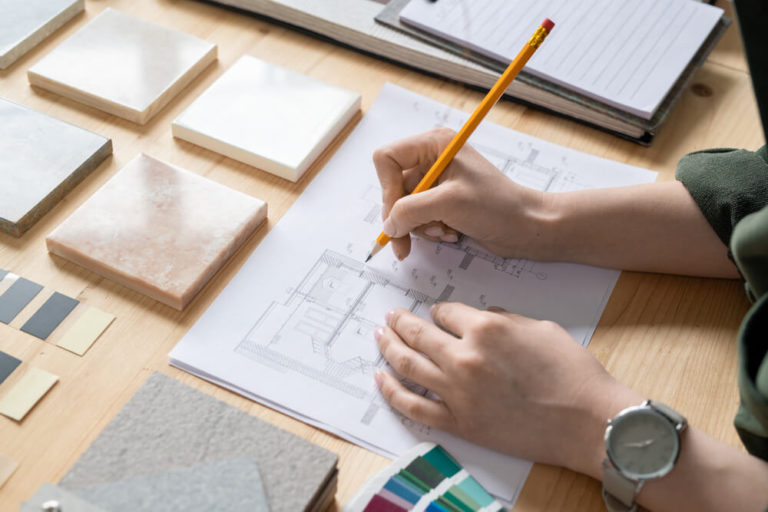
You will need a minimum of five GCSEs, including Maths and English, for fulfilling the requirement. You can also have an equivalent level 2 qualification, such as the BTEC First Diploma in Art and Design.
However, if you want to study Interior Design at a higher level, such as an HND, a foundation degree, or a bachelor’s degree, you’ll need to first complete 2-3 related A-Levels or a BTEC level 3 course. While a bachelor’s degree or another type of higher education isn’t required to work as an interior designer, it can significantly benefit you.
How Much Does an Interior Designer Make in the UK?
Like those in most other fields, interior designer wages are determined by a variety of factors, including schooling, place, experience, and the company’s size and reputation. An interior designer working for a small family design firm in rural Cornwall, for example, would earn less than one working for a high-end architecture firm in central London.
An interior designer’s starting salary in the United Kingdom is around £18,000. More skilled and reputable professionals will earn up to £45,000. Besides, qualified interior designers with backgrounds in architecture, building codes, and structural design typically make the most money.
Your earning will vary if you have established yourself as an independent interior designer. Furthermore, salaries differ greatly depending on your connections, position, and reputation. You will make a lot of money if you work on high-profile ‘prestige’ campaigns. To sum up, you will earn what you charge your clients, so do not sell yourself short.
Conclusion
For those who are both imaginative and technically inclined, interior design can be a very fulfilling profession. Thus, learning how to become an interior designer is a step toward a thriving future doing something you enjoy. Above all, as in many other careers, experience is essential for success. Obtaining certifications along the way can be beneficial. However, it isn’t necessary if you have an equal amount of zeal and dedication.
- All Courses
- Accounting & Finance61
- Admin, Secretarial & PA45
- Audio Books (Audio Course)100
- Business Skills155
- Design76
- Digital Marketing48
- DIY (Do It Yourself)57
- Employability241
- Food Hygiene & Safety18
- Health & Fitness68
- Health & Safety109
- Health & Social Care184
- Human Resource49
- It & Software Skills116
- Language27
- LIFESTYLE85
- MAKEUP & BEAUTY49
- Management129
- Marketing60
- Massage & Physiotherapy17
- Microsoft Office64
- Nonprofit & Charity36
- On Demand Courses54
- Personal Development128
- Photography33
- Psychology & Counselling97
- SEN (Special Educational Needs)23
- Teaching and Education98














